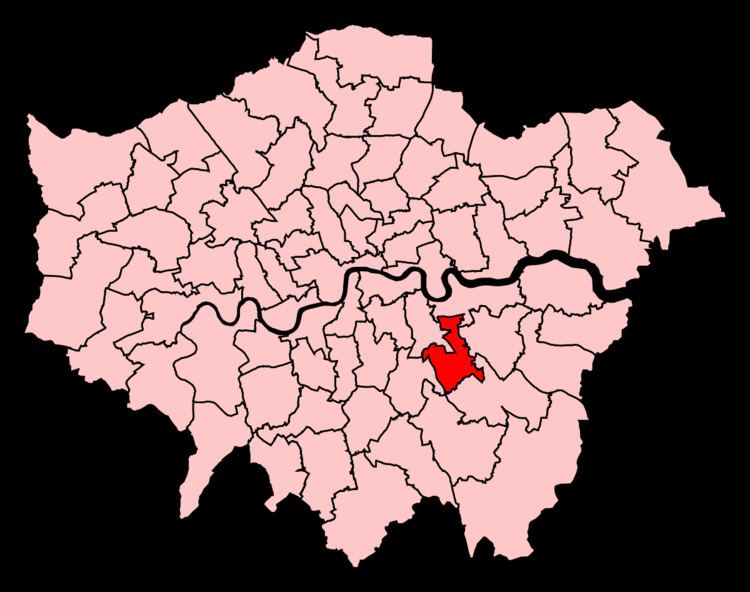County Greater London Created 1974 (1974) European Parliament constituency London Number of members 1 | Electorate 65,508 (December 2010) | |
 | ||
Replaced by Lewisham, Lewisham North, Lewisham South | ||
Lewisham East is a parliamentary constituency represented in the House of Commons of the UK Parliament since 2010 by Heidi Alexander of the Labour Party.
Contents
History
Lewisham East was created for the 1918 general election. From 1945-1950 the seat was represented by serving cabinet minister Herbert Morrison (Lab), winning the seat against its first MP, a Conservative, former army officer, Assheton Pownall.
The seat was abolished in 1950 but recreated in 1974. From 1979 to 1997 the MP elected won by marginal majorities. Its 1983–1992 representation was by Minister for Sport Colin Moynihan (Con). The area since the 1997 General Election has swung to Labour reflecting for example, 2014, local results. The seat produced the 51st largest Labour share of votes in 2015, of the 650 constituencies. The Conservative candidate of 2015 for the second time came third — the runner up switched to a UKIP candidate.
Constituency profile
This is a set of neighbourhoods in the inner London Borough of Lewisham, stretching from the relatively affluent and physically higher former village of Blackheath that overall has much more in common with the leafier parts of Greenwich than neighbouring Lewisham - the north and east of the more widely defined prominence is entirely in the Royal Borough of Greenwich. The other wards to the south have more social housing and less architectural grandeur — incidence of social deprivation is highest approaching downtown Lewisham and the Rushey Green side of Catford, a low-to-middle income area which opened one of the first indoor shopping malls in England.
At the southern end of the seat is Grove Park, one of the quieter and more upmarket parts of Lewisham Borough, which, unlike the rest of Lewisham, has had a quite regular tendency to elect Conservative councillors. A minority of wards are becoming higher-than-London-average income and the same in respect of age, to form gradual Conservative targets for local elections. Nonetheless the incumbent Labour MP increased her majority further in 2015 - echoing council results of the previous year.
Boundaries
1918-1950: The Metropolitan Borough of Lewisham wards of Blackheath, Church, Lewisham Park, Manor, and South, and parts of the wards of Catford and Lewisham Village.
1974-1983: The London Borough of Lewisham wards of Blackheath and Lewisham Village, Grove Park, Lewisham Park, Manor Lee, St Andrew, St Mildred Lee, South Lee, Southend, and Whitefoot.
1983-2010: The London Borough of Lewisham wards of Blackheath, Churchdown, Downham, Grove Park, Hither Green, Manor Lee, St Margaret, St Mildred, and Whitefoot.
2010-present: The London Borough of Lewisham wards of Blackheath, Catford South, Downham, Grove Park, Lee Green, Rushey Green, and Whitefoot.
The 2010 redistribution created a replacement seat for Lewisham West, this time cross-borough and named Lewisham West and Penge, which meant consequential changes to the other seats in the borough.
